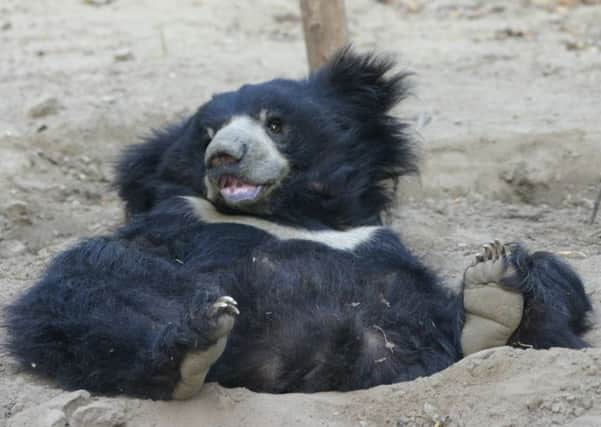Vet gets to the root of bears’ problems


Rachel Perry, of Grove Lodge Vets, has a special interest in dentistry, and was invited out to the Agra Bear Rescue Facility in India by International Animal Rescue and veterinary colleague Lisa Milella to help inspect and treat the bears’ teeth within the sanctuary and provide veterinary dental education for local vets.
Originally classified as sloths due to their long claws, sloth bears’ diet consists mainly of fruits, honey, and insects – especially termites and ants.
Advertisement
Hide AdAdvertisement
Hide AdStocky, with a long shaggy black mane and white, V-shaped marking on their chests, sloth bears can weigh anything from 60kg to 150kg, and can live to 25.
Classified as ‘vulnerable’ and protected under the Convention on International Trade in Endangered Species
regulations, sloth bears are threatened by habitat loss, and hunted due to destruction of crops or aggressive behaviour. Sloth bears have also, traditionally, been used as dancing bears, with cubs bought or poached and trained to ‘dance’ to entertain people and earn their keepers money. To make bears ‘safer’ to handle, young cubs would have their teeth broken with a hammer, and a rope or ring placed through their nose and muzzle with a hot poker, leading to numerous painful problems within their mouth and teeth.
Among a host of life-threatening injuries, these excruciatingly painful broken teeth quickly become severely infected with root abscesses.
Advertisement
Hide AdAdvertisement
Hide AdAlthough ‘dancing bears’ were outlawed in 1972, there were still around 800 bears wandering the roads between Delhi, Agra and Jaipur by the late 20th century – about 300 of which are now safely housed and receiving the veterinary care they need at the Agra rescue sanctuary.
Rachel said: “Of course, I jumped at the chance to be involved in such an exciting project. The anaesthetic gases, tubes, and x-rays we used were very similar to the ones used for dogs and cats at Grove Lodge Vets – but we don’t normally have to blow-dart them first!
“Some of the bears’ teeth had been damaged by their original owners for the purposes of dancing – the canines would be broken off with hammers.
“Not only is this painful, but also allows infection to enter the root and cause an abscess. Sometimes the teeth were pushed further into the jaw, creating deformed teeth trapped within the bone.
Advertisement
Hide AdAdvertisement
Hide Ad“Teeth would also wear down naturally due to the ‘sand-blasting’ effect of sucking up termites.”
Rachel was able to save some larger teeth by performing root canal procedures similar to those humans have. Teeth that could not be saved were extracted – not an easy procedure, because of the bears’ size.
The bears all made very smooth recoveries, and are now able to live peaceful, safe lives in comfort and enjoying huge amounts of space to perform their natural behaviours – as well as climbing frames to exercise, ponds to cool off in, and tree trunks hiding delicious honey.
For more info about the sanctuary, International Animal Rescue, or to donate, log on to the website www.iar.org.uk